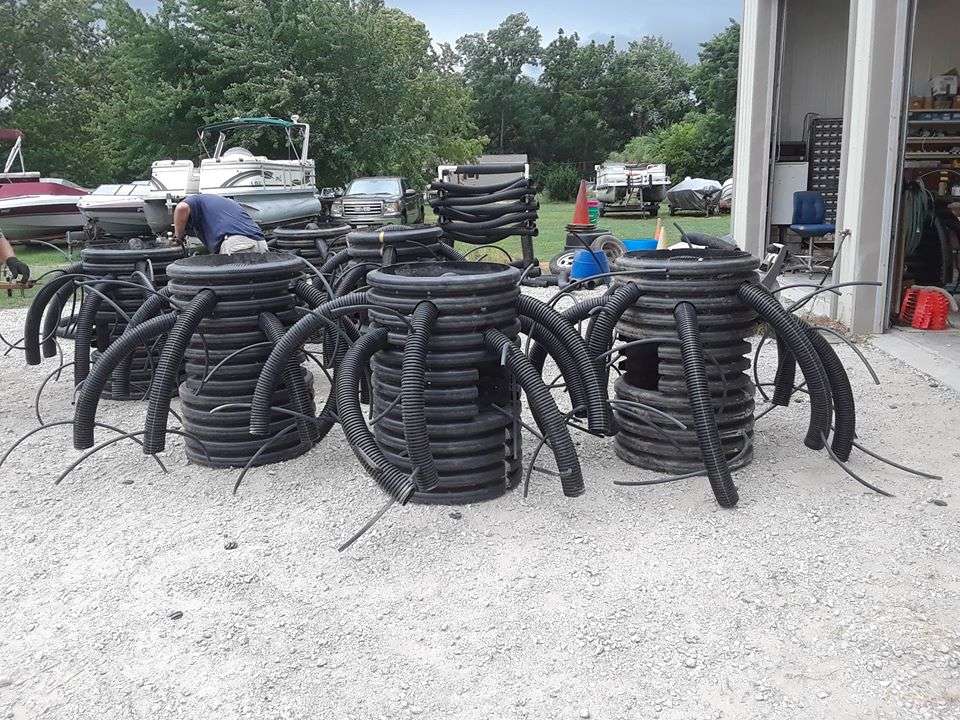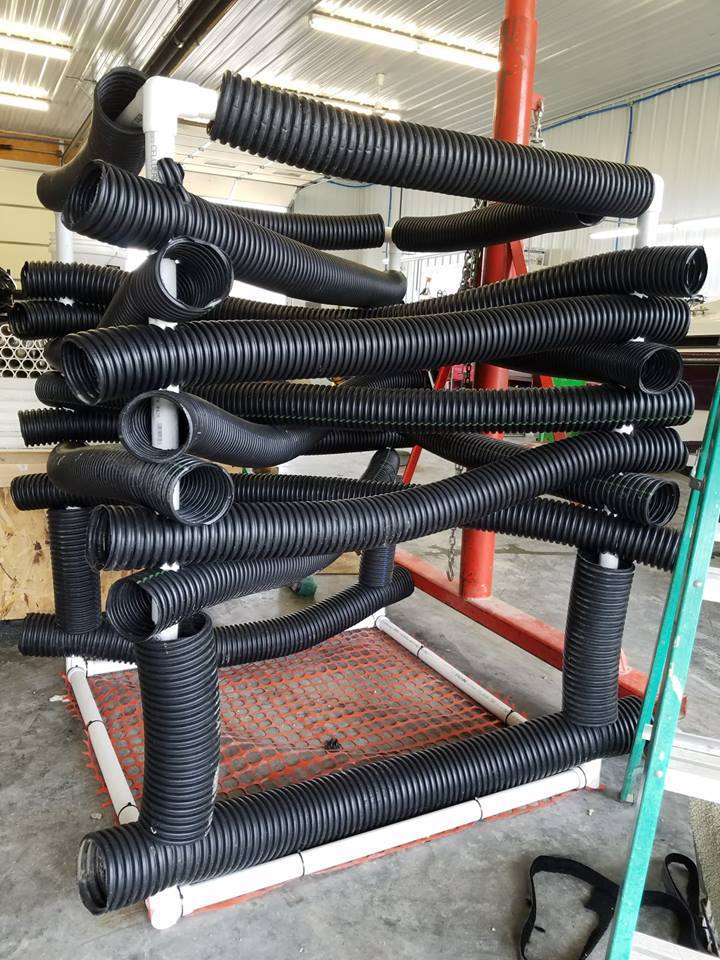
SHELBYVILLE, Ill. – Georgia cubes as fish attractors aren’t just for Georgia fisheries anymore. And many of them aren’t exactly cubes either.
As developed by the Georgia Department of Natural Resources, the original cube was 3-feet square, with a PVC frame and about 50 feet of corrugated drain pipe, either wrapped around and through the frame or cut into several pieces and attached to the inside for density. Longer lasting than wood, as well as lighter and easier to transport, cubes were an innovative alternative to cribs made out of logs. Often, they were anchored with gravel placed in the PVC or tied together and attached to cinder blocks or other weights.
Cribs and then cubes follow a growing trend of actually constructing habitat, often using manmade products, instead of relying solely on Christmas-tree brushpiles and sunken timber.
“Cost effective, easy to place and proven in other states, the new structures not only last more than three times longer than natural brush piles, but also have been shown to hold as many fish as the natural counterpart without affecting water quality,” reported Kansas Department of Wildlife, Parks and Tourism (KDWPT).
“We are entering our fourth year of using these cubes,” said David Breth, who coordinates KDWPT’s fisheries habitat program. “We intend to build both standard cubes and modified structures. These modifications range from taller structures or stacking to using less drain pipe and allowing more open areas for larger predators.”
In three years, Kansas has placed nearly 2,500 Georgia cubes and variations, he added. “A few of our fisheries biologists have modified the cubes before placing in the water by adding additional drain pipe to add bulk to the cube. One biologist added pool noodles to create a taller profile,” the biologist said.
Pennsylvania, Indiana, Arizona and Illinois are few of the other states making cubes and their variations.
Recently, some of the most innovative second-generation cubes have been constructed for Illinois’ Lake Shelbyville. As of August, the Illinois Department of Natural Resources (IDNR) and volunteers from the Lake Shelbyville Fish Habitat Alliance had teamed up to make 313 cubes, as well as 40 “artificial stumps.”
“Fishermen have told us to stop making Georgia cubes because fish like Shelbyville cubes better,” said IDNR’s Mike Mounce.
Changes started with adding a 20-inch frame to the bottom of the cubes to raise them off the lake floor, the biologist explained. Workers also placed snow fence on the bottom of the cubes, to discourage settling into the mud and silt. Mounce said that denser quartz gravel was added to the PVC for weight, while 5-inch tile and bricks also have been tried.
“We have a lot of current, and we want to make sure that they’re not knocked over,” he said.
Right now, the standard Shelbyville cube is 60 inches tall and 45 inches wide, with spacers underneath. Additionally, 92 feet of corrugated pipe is being used, instead of the standard 50.
“We’re talking about building double tall structures,” Mounce added. “And the more complex, the better.”
David Ewald a habitat innovator himself, agrees regarding the importance of complexity.
“For years we were told plastic didn’t work, but we had already proven otherwise with our own products,” said the owner of Fishiding, which offers a variety of fish habitats made with recycled products.
“Variety, complexity and density is finally getting the attention it deserves, but can only be achieved with the same variety in the material types selected. More variety in material types will retain the most variety in aquatic life. Some plastic types and chemical mixtures grow aquatic life better than others, but this continues to be overlooked by many.”
Mounce’s observations have been, though, that fish start hanging out at the cubes even before the plastic begins to “naturalize” with algae and microorganisms.
“The old idea the fish won’t use PVC structures until algae is on them is nonsense,” he said. “Two days after we put in those cubes in August, we saw fish above, below, and around them.”
Additionally, fish seem to like the “artificial stumps,” with corrugated culvert as trunks and pipe extending out of them like tentacles. Holes are cut in the trunks for fish to move in and out of.
“They’re based on the idea that old stumps have exposed roots because sediments has been washed away from them,” Mounce explained. “They’re attractive to both bass and crappie.”
What’s the future for cubes and fish attractors in general?
“Scaling up the sizes, heights, weights and complexities of habitat installations are where we are headed next,” Ewald said.
“Units that are picked up by hand and tossed overboard will become replaced by larger and more diverse complexes of cover for fish of all sizes to take refuge within, each of which, once installed, is too big and heavy to be moved by fishermen, current, or storm events.”







